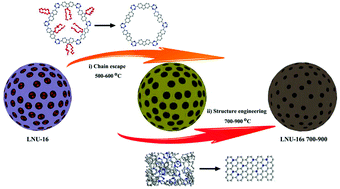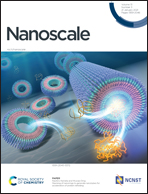Fine-regulating ultramicropores in porous carbon via a self-sacrificial template route for high-performance supercapacitors†
Abstract
Ultramicropores (size < 0.7 nm) are critically demanded to provide an efficient path for the penetration and transportation of electrolytes to achieve high-performance supercapacitors. Here, a self-sacrificial template approach is adopted, which introduces C8 alkyl chains with a kinetic diameter of 0.8–1 nm to occupy the cavity of a porous aromatic framework (PAF). During the heating process, the alkyl chains decompose from the dense architecture as the temperature increased from 500 to 600 °C, forming ∼1 nm micropores. The newly-obtained cavities provide sites for thermal-driven skeleton engineering (700–900 °C) to obtain ultramicropores. Based on the well-defined pore structure, the carbonized PAF solid revealed outstanding electrochemical performances, including high rate and long-term stability in a 6 M KOH electrolyte. Notably, the specific capacitance (294 F g−1) derived from the self-sacrificial template method exceeds the capability of all the other methods for the construction of ultramicropores including self-template strategy, carbonization of nanoparticles, and template-assisted strategy. The synthesis of ultramicroporous carbons via the self-sacrificial template route opens up a promising gate to adjust the porous structure for high-performance applications in supercapacitors.



 Please wait while we load your content...
Please wait while we load your content...